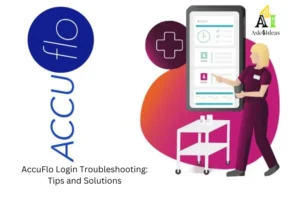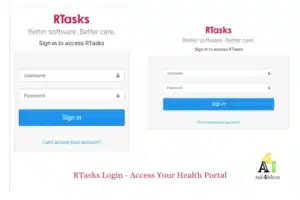This article will delve into the nuances of 127.0.0.1 and port 62893, pinpointing the prevalent causes of the 127.0.0.1:62893 error, and offering comprehensive solutions to address it. Additionally, it lays out preventive measures and best practices to avoid such errors in the future, ensuring that network administrators and users can maintain smooth operations with minimal interruptions. From diagnosing common causes to implementing fixes, this guide provides a roadmap for navigating through and beyond this networking quandary.
Understanding 127.0.0.1:62893 and Port 62893
What is 127.0.0.1:62893?
The IP address 127.0.0.1:62893, commonly referred to as the loopback address or localhost, is a special-purpose IPv4 address reserved for loopback purposes. It allows a computer to communicate with itself, acting as a testing tool for network configurations without sending packets over the network. This address is crucial for internal testing and development, as it ensures that no data leaves the device, maintaining security and efficiency in process testing.
Importance of Port Numbers
Ports are integral to the operation of network services, acting as endpoints in the OS to manage data traffic. Each port, identified by a number, directs specific types of network traffic to the correct application. Standard ports like 80 for HTTP are universally recognized, while others might be designated for particular services on a device.
Role of Port 62893
Port 62893, while less common, is used by specific applications like Memcached for caching data to enhance performance. It is vital for local communication between applications on the same machine. Using this port, applications can ensure their internal services are shielded from external network access, thereby increasing security and control over data flow.
Common Causes of the 127.0.0.1:62893 Error
Misconfigurations
Misconfigurations in setting up local development environments often lead to connectivity issues. Errors may arise from incorrect port configurations or typing mistakes in configuration files. Ensuring all settings are correctly defined across different applications is crucial to avoid these errors.
Port Conflicts
Port conflicts occur when multiple applications attempt to use the same port for connectivity, such as port 62893. This is common in development settings where several services might run simultaneously. Resolving these conflicts involves checking port assignments and ensuring each process uses its designated port.
Firewall and Security Settings
Firewalls or security software can inadvertently block traffic to port 62893, leading to connectivity problems. Configuring firewalls to allow traffic on this port and adjusting security settings to include exceptions for port 62893 are necessary steps to mitigate this issue.
Network Interface Problems
Faults with the network loopback adapter can significantly impact localhost operations. If the loopback interface is misconfigured or disabled, applications using 127.0.0.1:62893 for communication may cease to function. Proper setup and activation of the loopback interface are essential for maintaining internal network operations.
How to Fix the 127.0.0.1:62893 Error

Restarting Network Services
To address temporary glitches that may cause the 127.0.0.1:62893 error, restarting network services or the entire system can be effective. This action refreshes outdated configurations and resolves process hang-ups, potentially clearing minor network disruptions.
Reconfiguring Network Settings
Validating and correcting network configurations is crucial. Ensure the IP address, subnet mask, and gateway are correctly set and that the loopback interface is active. Proper settings prevent misconfigurations and collisions on port 62893, facilitating smooth localhost communication.
Adjusting Firewall and Security Settings
Modify firewall permissions to allow traffic on port 62893. Regularly review firewall rules to balance system security with functionality, ensuring that necessary exemptions for specific applications or ports are in place to avoid unnecessary blocks.
Updating Software and Drivers
Resolve bugs or compatibility issues by updating the application, operating system, and network drivers. Regular software updates enhance performance and security, reducing the likelihood of encountering the 127.0.0.1:62893 error due to outdated components.
Best Practices and Prevention Tips
To ensure optimal network performance and security, adhere to these best practices:
Regularly Monitor Network Health
Network environments evolve, necessitating regular audits to confirm that monitoring configurations remain effective. Adopt a proactive monitoring approach, setting alerts for potential issues before they escalate, and continuously learning about new threats and technologies to keep your strategy effective.
Use Network Diagnostic Tools
Tools like netstat and lsof can identify if applications are using port 62893, potentially causing errors. Regularly checking port activities helps detect unauthorized access attempts, ensuring the security of your network.
Maintain Updated Documentation
Comprehensive network documentation is crucial. It should include details about network setup, IP addresses, server configurations, and troubleshooting procedures. This not only aids in efficient problem resolution but also ensures consistency in network management.
Regular Software Updates
Consistently update software to patch security vulnerabilities and enhance functionality. Software updates prevent exploitation of known flaws by cyber attackers, keeping your network secure and efficient. Regular updates are not just for fixing bugs but also for improving the overall security and performance of your network systems.
Conclusion
Navigating through the complexities of the 127.0.0.1:62893 error, this article has offered a comprehensive guide from understanding the basis of localhost communication and port usage to diagnosing common issues that lead to these network errors. By dissecting the causes, ranging from misconfigurations and port conflicts to firewall settings and interface problems, it has provided actionable solutions and preventive strategies. Ensuring correct configurations, addressing security settings, and maintaining updated systems are foundational steps in mitigating such issues and promoting efficient network operations.
The overarching message emphasizes the importance of proactive network management and the necessity of regular system checks and updates. Adopting these practices will not only resolve the 127.0.0.1:62893 error but will also enhance overall network health, security, and performance. The insights and solutions presented here serve as a valuable resource for network administrators and users alike, encouraging a knowledgeable approach to troubleshooting and an informed strategy for prevention. Upholding these principles ensures that productivity is maintained with minimal disruptions, safeguarding the reliability and integrity of network communications.
FAQs
1. What should I do if I cannot connect to 127.0.0.1:62893 and the connection is refused?
To resolve the issue where localhost refuses to connect, particularly in Google Chrome, you should first clear your browser’s cache. Additionally, verify your proxy server settings and ensure that your DNS server address is correctly configured.
2. What does a network error on a website indicate?
A network error on a website signifies a failure in a network request. Each network error is characterized by a type, which is a descriptive string, and a phase, which indicates the stage during which the error occurred, such as during DNS resolution.
For more news and ideas stay tuned with Ask4ideas!





